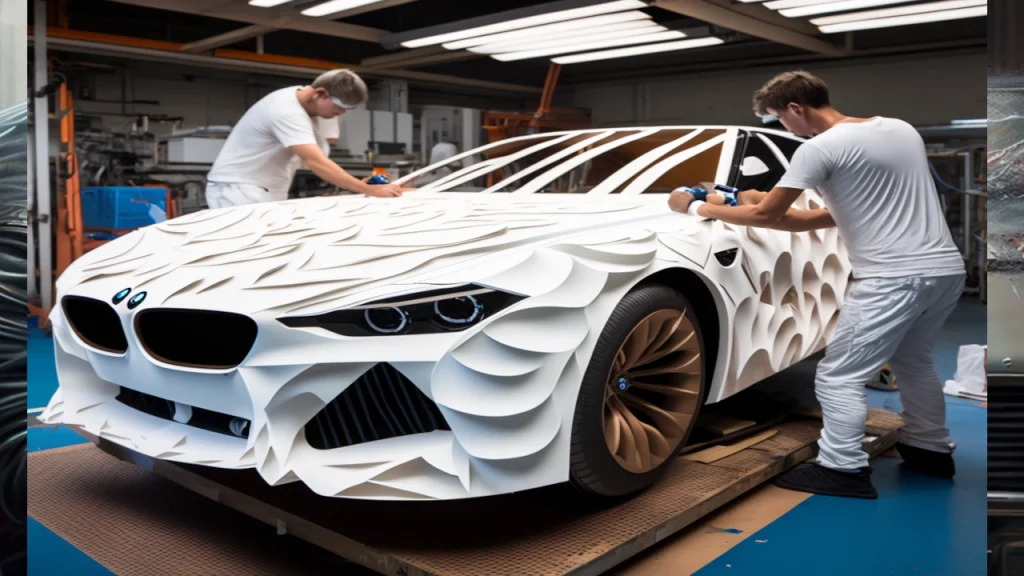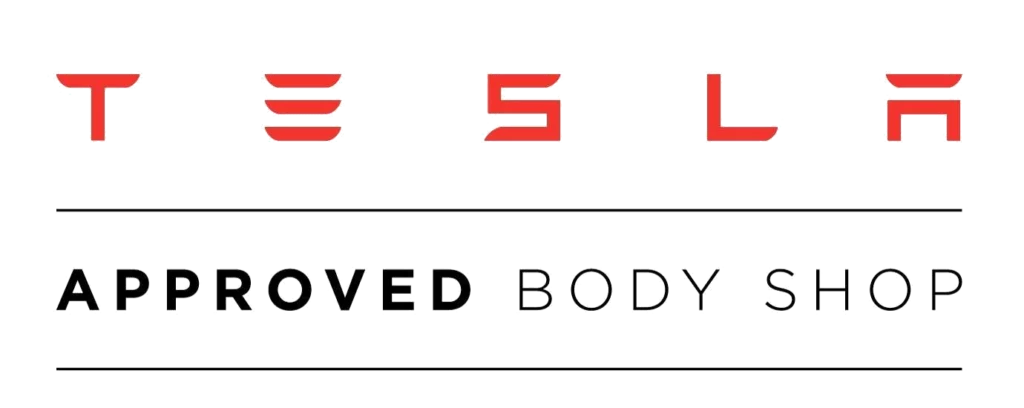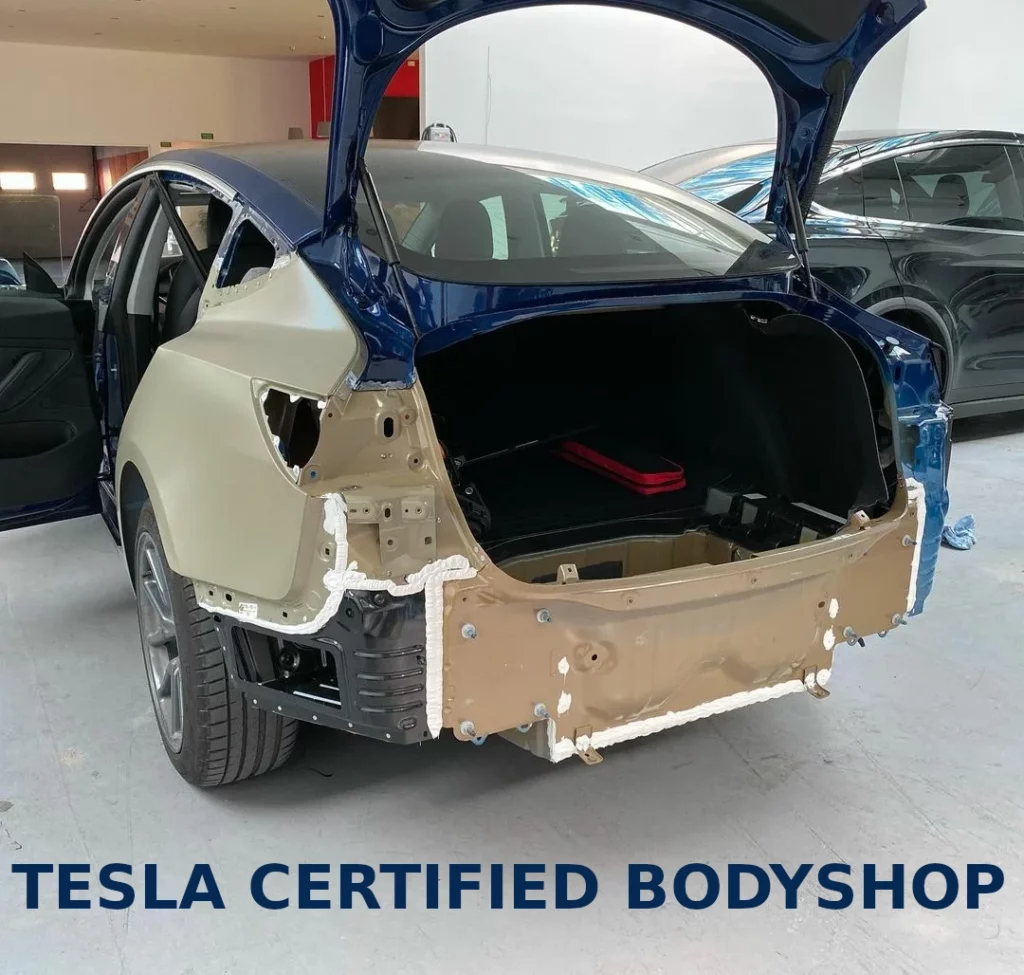- Introduction
- Understanding Car Body Paint Aging
- Importance of Maintenance for Longevity
- Factors Contributing to Paint Aging
- Environmental Factors
- Road Hazards and Debris
- Improper Care Practices
- Preventive Measures
- Regular Washing and Waxing
- Protective Coatings and Sealants
- Parking Considerations and Sheltering Options
- Maintenance Techniques
- Cleaning Methods and Products
- Minor Scratch and Chip Repair
- Polishing and Buffing
- DIY vs. Professional Maintenance
- Pros and Cons of DIY Solutions
- Benefits of Professional Detailing Services
- Choosing the Right Approach for Your Needs
- Long-Term Strategies
- Creating a Maintenance Schedule
- Monitoring and Addressing Signs of Aging
- Incorporating Paint Protection Films and Ceramic Coatings
- Environmental Considerations
- Understanding Climate Impact
- Parking and Storage Recommendations
- Effects of Pollution and Industrial Residue
- Cost Considerations
- Budget-Friendly Maintenance Options
- Investment in Long-Term Protection
- Evaluating Value vs. Expense
- Conclusion
- Recap of Key Points
- Encouragement for Consistent Maintenance
- Preserving Your Car’s Shine for Years to Come
1. Introduction
The allure of a freshly painted car is undeniable, but over time, the effects of aging can take a toll on your vehicle’s body paint. This comprehensive guide is designed to help you understand the factors contributing to car body paint aging and emphasize the critical role of maintenance in preserving your car’s aesthetic appeal for the long haul.
1.1 Understanding Car Body Paint Aging
Car body paint aging is a natural process influenced by various external factors. In this section, we delve into the science behind paint aging, exploring how exposure to sunlight, harsh weather conditions, and other environmental elements can impact the appearance of your vehicle. Understanding these factors is the first step towards implementing effective preventive measures.
1.2 Importance of Maintenance for Longevity
Why does maintaining your car’s body paint matter? This subsection highlights the significance of regular maintenance in extending the life and vibrancy of your car’s paint job. From preventing oxidation and fading to safeguarding against scratches and corrosive substances, maintenance plays a pivotal role in preserving your vehicle’s overall aesthetic and protecting its resale value. As we journey through this guide, you’ll discover practical tips and techniques to keep your car looking as good as the day it rolled off the lot.
2. Factors Contributing to Paint Aging
Understanding the various factors that contribute to car body paint aging is essential for implementing effective preventive measures. In this section, we explore the environmental, road-related, and care-related elements that can impact the longevity and appearance of your vehicle’s paint job.
2.1 Environmental Factors
A. Sunlight Exposure: Prolonged exposure to sunlight leads to the breakdown of paint molecules, resulting in oxidation and fading. Learn about the specific effects of UV rays on your car’s paint and how to mitigate sun-related damage.
B. Weather Conditions: Harsh weather elements such as rain, snow, and hail can accelerate paint deterioration. Explore how different weather patterns contribute to paint aging and discover strategies for protecting your vehicle in adverse conditions.
2.2 Road Hazards and Debris
A. Stone Chips and Scratches: Constant exposure to road debris can cause unsightly chips and scratches on your car’s paint. Understand the risks associated with driving on different road surfaces and explore ways to minimize paint damage.
B. Chemical Contaminants: Roadside contaminants like bird droppings, tree sap, and industrial fallout can corrode and stain your car’s paint. Learn about the corrosive impact of these substances and effective methods for prompt removal.
2.3 Improper Care Practices
A. Inadequate Washing Techniques: Using improper cleaning methods or neglecting regular washing can contribute to the accumulation of dirt and contaminants, hastening paint deterioration. Discover best practices for washing your car to maintain its shine.
B. Lack of Protective Measures: Failure to implement protective measures, such as waxing and sealing, leaves your car’s paint vulnerable to environmental threats. Explore how protective coatings act as a shield, safeguarding the paint from the elements.
By gaining insight into these contributing factors, you’ll be better equipped to tailor your preventive and maintenance efforts to address specific challenges and ensure the longevity of your car’s body paint.
3. Preventive Measures
To shield your car’s body paint from the ravages of time and the environment, proactive measures are crucial. This section outlines a range of preventive strategies aimed at maintaining the vibrancy and integrity of your vehicle’s paint job for years to come.
3.1 Regular Washing and Waxing
A. Importance of Regular Washing: Discover the significance of frequent car washing in removing dirt, contaminants, and harmful substances from your vehicle’s surface. Learn about the ideal washing frequency and techniques to keep your car looking pristine.
B. Waxing as a Protective Barrier: Explore the protective benefits of waxing, which acts as a barrier against UV rays, pollutants, and environmental contaminants. Understand the different types of car wax and how to apply them effectively for maximum protection.
3.2 Protective Coatings and Sealants
A. Ceramic Coatings: Delve into the benefits of ceramic coatings, which offer long-lasting protection against UV damage, oxidation, and chemical contaminants. Learn about the application process and considerations for choosing the right ceramic coating for your car.
B. Sealants for Enhanced Durability: Understand how sealants add an extra layer of defense to your car’s paint, providing durability and resistance to environmental hazards. Explore different types of sealants and their application methods.
3.3 Parking Considerations and Sheltering Options
A. Sheltering Your Vehicle: Parking considerations can significantly impact your car’s paint longevity. Explore the benefits of sheltering your vehicle in a garage or using car covers to shield it from the elements.
B. Avoiding Direct Sunlight: Excessive exposure to direct sunlight can accelerate paint aging. Learn about strategic parking and shading options to minimize sunlight exposure and protect your car’s finish.
By incorporating these preventive measures into your car care routine, you create a robust defense against the elements, ensuring that your vehicle’s body paint remains vibrant and resilient over time.
4. Maintenance Techniques
Maintaining the pristine appearance of your car’s body paint requires more than preventive measures—it demands ongoing care and attention. This section delves into various maintenance techniques, from effective cleaning methods to addressing minor imperfections, ensuring your vehicle continues to shine.
4.1 Cleaning Methods and Products
A. Gentle Washing Practices: Explore the importance of using soft materials and gentle washing techniques to prevent scratches and swirl marks. Learn about the proper sequence for washing and rinsing your car to maintain its glossy finish.
B. Choosing the Right Cleaning Products: Understand the significance of selecting appropriate cleaning products for your car’s paint type. From pH-balanced shampoos to microfiber towels, discover the tools that contribute to a scratch-free and polished result.
4.2 Minor Scratch and Chip Repair
A. Assessing Minor Damage: Learn how to assess and differentiate between minor scratches, chips, and more significant paint damage. Understanding the nature of the damage is crucial for determining the appropriate repair approach.
B. Touch-Up Paint Application: Explore the step-by-step process of applying touch-up paint to address minor scratches and chips. Gain insights into color matching, blending techniques, and achieving a seamless finish.
4.3 Polishing and Buffing
A. Significance of Polishing: Discover how polishing contributes to restoring and enhancing the shine of your car’s paint. Learn about different types of polishing compounds and the appropriate situations for their use.
B. Buffing Techniques: Delve into the art of buffing, including the use of buffing pads and machines. Understand how buffing can eliminate imperfections, such as swirl marks and light scratches, leaving your car’s paint with a smooth and glossy appearance.
By mastering these maintenance techniques, you’ll be equipped to address common issues, maintain the aesthetic appeal of your car’s body paint, and take pride in driving a vehicle that consistently looks as good as new.
5. DIY vs. Professional Maintenance
The decision between undertaking do-it-yourself (DIY) maintenance and seeking professional services for your car’s body paint upkeep involves a careful consideration of factors. In this section, we explore the pros and cons of both approaches, helping you determine the most suitable maintenance strategy for your vehicle.
5.1 Pros and Cons of DIY Solutions
A. Advantages of DIY Maintenance:
- Cost Savings: DIY maintenance can be more budget-friendly, as it eliminates labor costs associated with professional services.
- Hands-On Experience: Engaging in DIY maintenance provides an opportunity for hands-on experience and a deeper understanding of your vehicle.
- Flexible Scheduling: DIY allows you to schedule maintenance tasks at your convenience.
B. Challenges of DIY Maintenance:
- Skill Level: Effective maintenance requires a certain level of skill and knowledge, which may be a challenge for beginners.
- Time-Consuming: DIY maintenance can be time-consuming, especially if you’re learning as you go.
- Equipment and Products: Obtaining the right equipment and quality products is crucial for successful DIY maintenance.
5.2 Benefits of Professional Detailing Services
A. Expertise and Precision:
- Professional detailers possess expertise and specialized tools to address a range of paint issues with precision.
- Time Efficiency: Professional services often provide quicker results, saving you time and effort.
- Comprehensive Solutions: Professionals may offer comprehensive services, including paint correction, polishing, and protective coatings.
B. Considerations for Professional Services:
- Cost Investment: Professional detailing services may involve a higher initial cost.
- Scheduling Constraints: Appointment availability and scheduling may require coordination with the detailer’s timeline.
- Dependence on Professionals: Relying on professionals for maintenance means you may not gain hands-on experience.
5.3 Choosing the Right Approach for Your Needs
A. Balancing DIY and Professional Maintenance:
- Consider a hybrid approach, where routine tasks are handled through DIY efforts, while periodic professional detailing provides comprehensive care.
- Assess your skill level, available time, and budget constraints to find the right balance.
B. Tailoring Maintenance to Your Vehicle:
- The choice between DIY and professional maintenance can vary based on your vehicle’s age, paint condition, and your personal preferences.
- Evaluate the specific needs of your car to determine the most effective maintenance strategy.
By weighing the advantages and drawbacks of DIY and professional maintenance, you can develop a customized approach that suits your skills, resources, and the unique requirements of your vehicle’s body paint.
6. Long-Term Strategies
Preserving your car’s body paint requires a comprehensive, long-term approach that goes beyond routine maintenance. In this section, we explore strategies to ensure the prolonged vibrancy and resilience of your vehicle’s paint job, covering everything from creating a maintenance schedule to incorporating advanced protective measures.
6.1 Creating a Maintenance Schedule
A. Consistent Routine Checks: Establishing a regular maintenance schedule ensures that your car receives timely attention. Learn how to conduct routine checks for scratches, contaminants, and other issues, allowing for prompt intervention.
B. Seasonal Considerations: Tailor your maintenance schedule to seasonal changes, addressing specific challenges that arise with different weather conditions. Understand how to prepare your car’s paint for varying temperatures and environmental factors.
6.2 Monitoring and Addressing Signs of Aging
A. Identifying Early Signs: Train your eye to identify early signs of paint aging, such as fading, oxidation, or minor scratches. Early detection allows for proactive measures to prevent further deterioration.
B. Addressing Issues Promptly: Learn the importance of addressing paint issues promptly to prevent them from escalating. Discover quick fixes for minor problems and when to seek professional assistance for more significant concerns.
6.3 Incorporating Paint Protection Films and Ceramic Coatings
A. Paint Protection Films: Explore the benefits of paint protection films in shielding your car’s paint from scratches, stone chips, and UV rays. Understand the installation process and how to choose the right film for your vehicle.
B. Ceramic Coatings: Delve into the long-term protective benefits of ceramic coatings. Learn how these coatings create a durable shield against environmental contaminants, UV rays, and chemical damage, extending the life of your car’s paint.
By adopting these long-term strategies, you not only preserve the immediate aesthetic appeal of your car but also invest in its sustained visual excellence over the years. Consistency, vigilance, and the integration of advanced protective measures contribute to a vehicle that stands the test of time in both appearance and performance.
7. Environmental Considerations
Environmental factors play a significant role in the aging of your car’s body paint. In this section, we explore the impact of climate, pollution, and other environmental elements, providing insights into how you can mitigate these effects to maintain the pristine condition of your vehicle.
7.1 Understanding Climate Impact
A. Effects of Sun and Heat: Delve into the specific impact of sunlight and high temperatures on your car’s paint. Learn about the potential for paint oxidation, fading, and how to safeguard against these issues in sunny climates.
B. Challenges in Cold Weather: Explore the challenges posed by cold weather, including snow, ice, and road salts. Understand how these elements can accelerate paint deterioration and implement protective measures for winter months.
7.2 Parking and Storage Recommendations
A. Garage Parking Benefits: Discover the advantages of parking your car in a garage, providing protection from the elements and maintaining a more stable climate. Learn tips for optimizing garage space for effective car storage.
B. Shading Options: Explore alternative shading options, such as carports and parking in the shade, to minimize the impact of direct sunlight on your vehicle. Strategic parking can contribute to long-term paint preservation.
7.3 Effects of Pollution and Industrial Residue
A. Airborne Pollutants: Understand the detrimental effects of airborne pollutants, such as industrial emissions and pollutants in urban areas, on your car’s paint. Learn about cleaning strategies to counteract the impact of pollution.
B. Tree Sap and Bird Droppings: Explore the corrosive effects of tree sap and bird droppings on car paint. Discover preventive measures and effective cleaning techniques to address these common environmental challenges.
By considering the unique environmental conditions your car faces, you can implement targeted strategies to protect its body paint. Understanding the impact of climate, pollution, and other factors empowers you to make informed decisions and proactively preserve the aesthetic integrity of your vehicle.
8. Cost Considerations
Maintaining your car’s body paint involves various costs, from routine maintenance expenses to potential professional services. In this section, we explore the financial aspects of preserving your vehicle’s appearance, offering insights into budget-friendly options and considerations for long-term investment.
8.1 Budget-Friendly Maintenance Options
A. DIY Cleaning Solutions: Discover cost-effective and homemade cleaning solutions that effectively remove contaminants and maintain your car’s shine without breaking the bank.
B. Affordable Protective Coatings: Explore budget-friendly protective coatings and sealants that provide a good balance between cost and effectiveness in shielding your car’s paint.
8.2 Investment in Long-Term Protection
A. Professional Detailing Services: Evaluate the costs associated with professional detailing services and understand the value they bring, especially in terms of precision, time savings, and comprehensive care.
B. Advanced Protective Measures: Consider the investment in advanced protective measures, such as ceramic coatings and paint protection films, for long-term benefits in paint preservation.
8.3 Evaluating Value vs. Expense
A. Resale Value: Understand how maintaining your car’s body paint contributes to its overall resale value. Investing in preservation measures can potentially enhance the resale value of your vehicle.
B. Balancing Costs with Benefits: Evaluate the costs of maintenance against the benefits of a well-preserved and aesthetically pleasing vehicle. Striking the right balance ensures that your investment aligns with your priorities and budget.
When considering cost-effective maintenance options and understanding the long-term value of various protective measures, you can make informed decisions that align with your budget and contribute to the sustained beauty of your car’s body paint.
9. Conclusion
As we conclude this guide on car body paint aging prevention and maintenance, it’s evident that preserving your vehicle’s appearance is a multifaceted endeavor. From understanding the environmental factors influencing paint aging to implementing preventive measures, maintenance techniques, and considering cost-effective options, you’ve gained valuable insights into ensuring your car maintains its aesthetic allure.
9.1 Recap of Key Points
- Environmental Impact: Appreciate the role of climate, pollution, and other environmental factors in the aging of your car’s body paint.
- Preventive Measures: Embrace regular washing, waxing, and the application of protective coatings as proactive steps to shield your car from the elements.
- Maintenance Techniques: Learn the art of effective cleaning, scratch repair, and polishing to address minor imperfections and maintain the gloss of your car’s paint.
- DIY vs. Professional Maintenance: Weigh the advantages and challenges of both DIY and professional approaches, finding the right balance for your skills, time, and budget.
- Long-Term Strategies: Consider creating a maintenance schedule, monitoring signs of aging, and incorporating advanced protective measures for sustained paint longevity.
- Environmental Considerations: Understand how climate, parking choices, and pollution impact your car’s paint, and implement strategies to mitigate these effects.
- Cost Considerations: Explore budget-friendly options and evaluate the long-term value of investments in professional services and advanced protective measures.
9.2 Moving Forward
Your journey to preserve your car’s body paint is ongoing. Regular attention, informed decisions, and a balance between DIY efforts and professional services will contribute to the enduring beauty of your vehicle. As you embark on this maintenance journey, remember that each action you take plays a part in ensuring your car continues to turn heads for years to come.
Thank you for joining us on this exploration of car body paint maintenance. May your efforts result in a vehicle that not only stands the test of time but does so with an everlasting shine. Safe travels!




